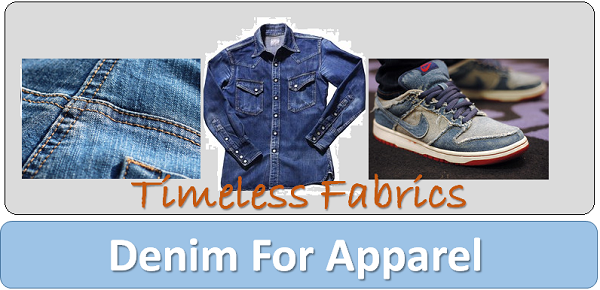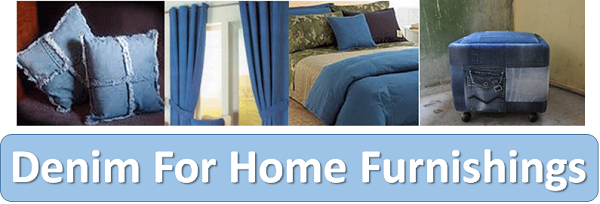Denim fabrics first gained prominence in the late 1800s when a tailor from Nevada, produced the first pair of denim pants. It was mainly worn by blue-collar workers for its hardiness and long-lasting qualities.
Now, about 150 years later, denim is so popular, everyone everywhere has at least a couple of items at home made from denim fabrics. And it can be anything from denim cushion covers and window blinds to denim skirts, shorts, hats or jackets.

Denim fabrics are highly adaptable materials that have stood the test of time. Worn in virtually all regions of the world, its practicality and versatility are what make the fabric suitable for so many things.
There are different types of denim fabric and they come in different colours and textures. Everyone is more familiar with the 100% cotton denim dyed indigo blue; it is authentic and traditional. Traditional denim remains a classic textile and still remains the most popular among today’s consumers.

There different categories of denim, and they include:
- Washed
- Khaki
- Raw
- Dry
- Stretch
- Bleached
- Coloured
- Patterned
- Crushed
- Reverse
And within each category, there are varying elements like the fabric’s fibre content (pure cotton or fibre blends), yarn weight, shades (light to dark), colours, and textures.
Properties of Denim Fabrics
- Hard-wearing
- Sturdy
- Heavyweight
- Soft
- Twill weave
- Multipurpose
- Great price range
- Timeless
- Non-age specific
9 Things You Can Make with Denim Materials
- Upholstery
- Slipcovers
- Quilts
- Apparel
- Footwear
- Fashion accessories
- Hats
- Lampshades
- Artworks
Denim has physical attributes that go beyond its thickness, crease recovery, tensile strength, durability, and non-abrasive properties. It is also comfortable, and has thermal conductivity qualities, air permeability and moisture transport properties. Additionally, it remains traditionally unique in its consistent colour derived from a blue pigment obtained from indigo dye.